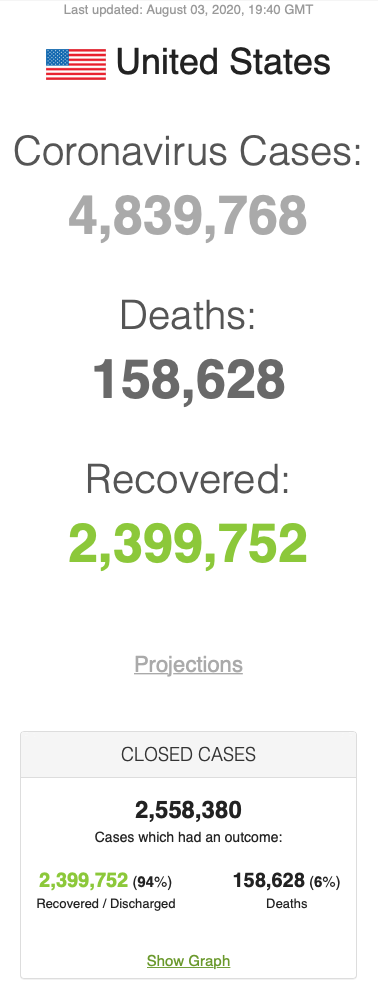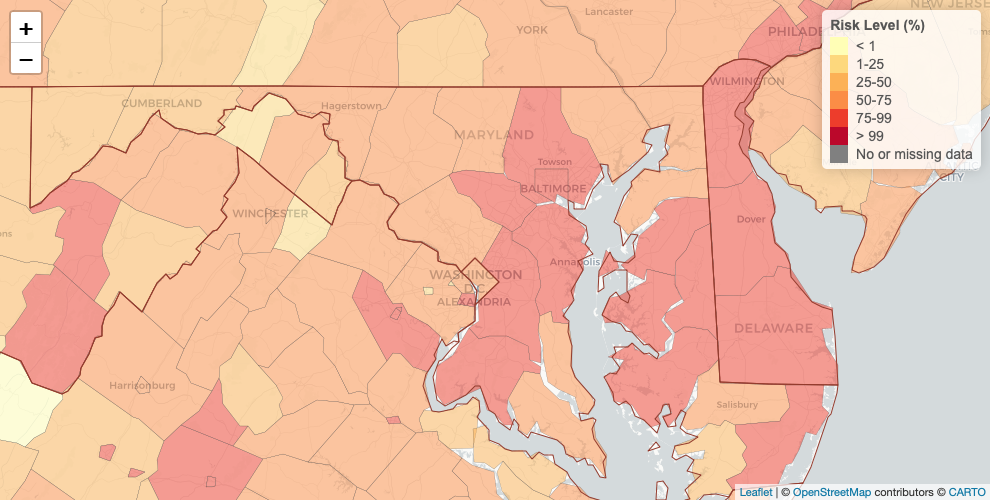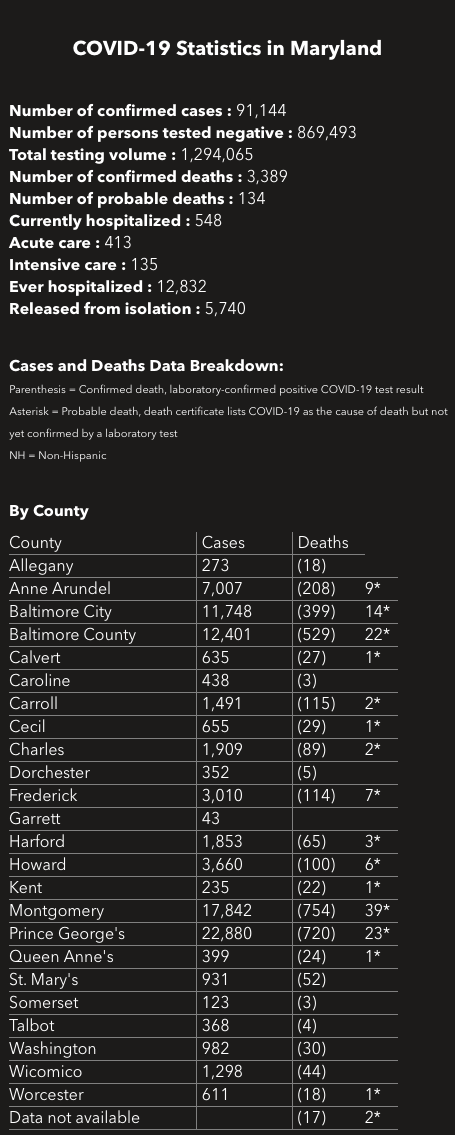
What Makes Motorcycle Accident Lawsuits Different?
Motorcycle riders have the same rights as all other road users, yet they are often overlooked or disregarded by other
D'Amore Personal Injury Law, LLC
Serious Injury Lawyers Proudly Serving
Baltimore, Annapolis, & Washington, D.C.
COVID-19, or coronavirus, has been tearing its way through the United States since January of 2020. With approximately 18 million reported cases and over 650,000 deaths worldwide, COVID-19 is the largest threat to public health in over 30 years; surpassing the total global death count of the 2009 H1N1 outbreak in just six months. Information about the virus, including how it spreads, how it can be treated, and how seriously it can harm humans has been varied and confusing. In this post, we attempt to provide the latest facts and data, in a way we hope our readers will find practical and useful.
COVID-19 stands for “Corona-Virus Disease of 2019.” COVID-19 is not the first-ever coronavirus the world has seen. It was originally called a novel coronavirus because many common illnesses, including the flu, also fall under the category of a coronavirus. But, this particular form of coronavirus had not been seen in humans before the outbreak of 2019. Thus, it was given the name of COVID-19. Because we had never seen the virus before, there were no treatments or vaccines that had been invented, studied, or approved as safe.
Furthermore, medical scientists and researchers had no information about our immune systems’ ability to defend us against the virus. So, people got sick and doctors tried various treatments. Data on symptoms, treatments, and methods of spread from all over the world was shared in real-time across the internet and social media before any scientific consensus could be reached, leaving people confused and scared.
Seven months into the pandemic, we have learned much. However, we are still in the beginning stages of understanding the critical facts needed to intelligently assess COVID-19 individual risk, disease prevention, treatment protocol, and behavior modification. Stated simply, we are still playing defense against a moving target. We still need to learn enough about our opponent to exploit its weaknesses and defeat it. So, what do we know?
Coronaviruses are defined as “a large family of viruses that cause illness ranging from the common cold to more severe diseases”(World Health Organization Staff).The severe disease category is reserved for the type that causes significant respiratory issues in humans.
COVID-19 has been a particular challenge for two reasons:
1. Unlike other coronaviruses, its symptoms seem to greatly vary by individual. They include respiratory infections, a runny nose, headache, loss of sense of taste or smell, a cough or sore throat, fever, and shortness of breath. Some doctors are now seeing neurological (memory and motor function) effects they think are linked to COVID-19. These symptom variants make it hard for people to know whether they have COVID-19 or a “regular” cold or flu, and they don’t modify their behavior to protect others from the spread.
2. The second challenge with COVID-19 is its ability to get into the body and cause no symptoms for up to fourteen days. Some people can contract the disease, and never show symptoms. However, in both cases, these seemingly healthy people can still spread the virus to others. So, we don’t know who is “sick”. Therefore, we can’t restrict “stay away from others” or “wear a mask” orders to any subsection of the population. This is why doctors and disease specialists started recommending that everyone stay away from other people, and everyone wear a face-mask.
We have learned that COVID-19 poses a greater threat to those who have existing medical issues, and the elderly. It is reported that those who have existing medical issues are twelve times more likely to die than those who do not. While people who are considered young or healthy are not as high risk, they can still contract and spread the disease.
A characteristic of COVID-19 that increases its ability to spread is its ability to create asymptomatic carriers. An asymptomatic carrier is someone who has the virus, shows no symptoms of illness, but can still spread it to others. It is reported that between 25% and 50% of those with COVID are asymptomatic.
It is also possible to be Pre-symptomatic; meaning you test positive for the virus, show no symptoms at the time of testing, but get sick later. This has made tracking the number of confirmed cases even more difficult for medical professionals, and has allowed the virus to spread faster than many other contagious diseases.
 The United States has been battling COVID-19 since the beginning of this year, with the first few cases confirmed in late January. By January 27th, the White House had created the Coronavirus Task Force, led by Vice President Mike Pence. The Task Force “coordinates and oversees the Administration’s efforts to monitor, prevent, contain, and mitigate the spread of coronavirus disease” (White House Staff).
The United States has been battling COVID-19 since the beginning of this year, with the first few cases confirmed in late January. By January 27th, the White House had created the Coronavirus Task Force, led by Vice President Mike Pence. The Task Force “coordinates and oversees the Administration’s efforts to monitor, prevent, contain, and mitigate the spread of coronavirus disease” (White House Staff).
While the White House attempted to assure the population that the U.S. had the virus under control, the United States Center for Disease Control (the CDC) began developing ways to test individuals for the virus. The tests from the CDC were sent out to labs in February but were soon found to be faulty. This means the number of confirmed cases was inaccurate. There were also not enough tests available, which led to the number of known cases being artificially low. With a lower amount of reported cases, the U.S. was able to justify its existing testing regime. The regime also only allowed for testing on individuals who were already showing symptoms of the disease. This is one of the reasons COVID-19 appeared to sneak up on the U.S. so quickly; the number of actual cases was artificially low and people who had the virus were unconsciously spreading it to others.
On March 13th, the US officially declared a National Emergency due to the Coronavirus. At this point, the U.S. only placed travel bans on those coming from inland China, Europe, The United Kingdom, Ireland, and Iran. However, no restrictions on travel from other countries, or within the United States was put into place.
At the same time, the US attempted an “economic shut down”; hoping that keeping people’s usual movement to and from school, work, retail, and social settings would slow the spread of the virus. Testing became more widely available in March, and the number of confirmed cases has been rising steadily ever since. The U.S. government attempted to ease the economic impact of the shut down with a number of monetary aid programs to businesses and individuals.
However, many people disagreed with the policy, refused to follow it strictly, and placed pressure on their local governments to reverse it. This caused States to start relaxing their “shut down” policies while the virus was still rampantly spreading across the country.
Presently, the United States is averaging 62,000 new cases daily; more than any other county in the world. Experts in the U.S. and across the world have said the U.S. should have acted sooner, been more decisive, placed greater and more uniform restrictions on people’s ability to interact, and kept them in place longer. They point to the U.S’s decision to wait before banning travel; noting that Europe and China enacted travel restrictions almost immediately and required all those traveling to quarantine for 14 days. Europe has been able to recover faster than the U.S. was its ability to shut down quickly, stay shut down, and efficiently enforce it.

At present, the status of COVID-19 in the U.S. is difficult to classify as getting better or worse. While doctors have found ways to more quickly and effectively treat patients, we are still averaging nearly 70,000 new cases and 1,000 deaths daily.
Researchers and pharmaceutical companies, with the aid of governments, have been working on a vaccine since January, but are still many months away from a safe and proven one. With about 27 vaccines in human trials, doctors hope to have a vaccine by sometime in 2021. Visit https://www.raps.org/news-and-articles/news-articles/2020/3/covid-19-vaccine-tracker for a complete list of all vaccines currently being tested.
While the country was on lockdown for a few months, all 50 states have begun reopening in some fashion.
 In Maryland, most retail stores, restaurants, and personal care businesses are open as well as houses of worship, casinos, places of outdoor recreation, and large industries. However, visiting any of these places requires one to stay socially distanced (six feet apart) and wear a mask that covers the mouth and nose. If you want to find more information on your state’s statistics regarding COVID-19, click here for an interactive chart from the Georgia Institute of Technology that shows the risk level of attending a specific event in your area.
In Maryland, most retail stores, restaurants, and personal care businesses are open as well as houses of worship, casinos, places of outdoor recreation, and large industries. However, visiting any of these places requires one to stay socially distanced (six feet apart) and wear a mask that covers the mouth and nose. If you want to find more information on your state’s statistics regarding COVID-19, click here for an interactive chart from the Georgia Institute of Technology that shows the risk level of attending a specific event in your area.
One of the biggest questions being asked is if the U.S and the rest of the world will ever fully go back to “normal”. There is no simple answer to this question. While the world will eventually fully reopen, no one really knows what precautions will have to be taken until a vaccine is fully developed. Developing a vaccine usually takes around three years, usually more when it is a virus the world has never seen before. Scientists are attempting to speed up the process and hope to have a vaccine by 2021, but clinical trials take time. Even after that, COVID-19 could still come back every year, just like the flu. The damages the economy has faced are also sure to leave a mark on the world for years to come. As for reopening, the U.S. is still taking it slow, with most businesses having people work from home if possible, and many schools and universities continuing to teach online in the fall. Some school and professional sports teams have been able to get back on the field. Some television and movie studios have even begun to find ways to shoot while still following the COVID-19 guidelines.
However, even with the restrictions in place COVID-19 is still spreading and killing people. So, until there is an effective vaccine and a reliable cure, we are all going to have to stay socially distanced, keep washing our hands, restricting our movements, and wearing face-masks.
The lawyers at D’Amore Personal Injury Law have expert training, knowledge, and skill in personal injury, medical malpractice, wrongful death, birth injuries, major accidents, and brain injuries. Each of our lawyers are highly qualified to handle any case that results in injuries due to someone else’s negligence.
If you’re seeking a Maryland personal injury lawyer who is highly qualified to handle medical malpractice, birth injuries, brain injuries, or any other personal injury case, get in touch with D’Amore Personal Injury Law. We’re committed to getting you the compensation and justice you deserve, and we don’t get paid unless you win. You don’t deserve to suffer because of someone else’s negligence. Our professional, experienced, qualified, SuperLawyers™ can get you the money you deserve.
Fill out the form below and we will contact you.
Or, give us a call at

Motorcycle riders have the same rights as all other road users, yet they are often overlooked or disregarded by other

Understanding Medical Malpractice Settlements in Maryland Medical malpractice cases can be emotionally and financially devastating for victims and their families.

How Long Does It Take to Settle a Traumatic Brain Injury Case in Maryland? Traumatic brain injuries (TBIs) can have